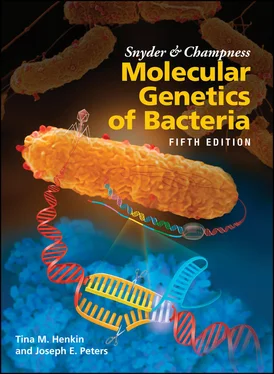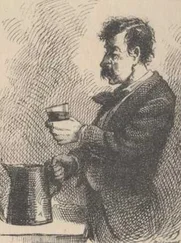1 1. Some viruses, such as adenovirus, avoid the problem of lagging-strand synthesis by replicating the individual strands of the DNA in the leading-strand direction simultaneously from both ends so that eventually the entire molecule is replicated. Why do bacterial chromosomes not replicate in this way?
2 2. Why are DNA molecules so long? Would it not be easier to have many shorter pieces of DNA? What are the advantages and disadvantages of a single long DNA molecule?
3 3. Why do cells have DNA as their hereditary material instead of RNA, like some viruses?
4 4. What effect would shifting a temperature-sensitive mutant with a mutation in the dnaA gene for initiator protein DnaA have on the rate of DNA synthesis? Would the rate drop linearly or exponentially? Would the slope of the curve be affected by the growth rate of the cells at the time of the shift? Explain.
5 5. The gyrase inhibitor novobiocin inhibits the growth of almost all types of bacteria. What would you predict about the gyrase of the bacterium Streptomyces sphaeroides, which makes this antibiotic? How would you test your hypothesis?
6 6. How do you think chromosome replication and cell division are coordinated in bacteria like E. coli? How would you go about testing your hypothesis?
7 7. Why is termination of chromosome replication so sloppy that the ter region is nonessential for growth and there has to be more than one ter site in each direction to completely stop the replication fork? What are the advantages of not having a definite site on the chromosome at which replication always terminates?
1 Aussel L, Barre F-X, Aroyo M, Stasiak A, Stasiak AZ, Sherratt D. 2002. FtsK is a DNA motor protein that activates chromosome dimer resolution by switching the catalytic state of the XerC and XerD recombinases. Cell 108:195–205.
2 Bernhardt TG, de Boer PAJ. 2005. SlmA, a nucleoid-associated, FtsZ binding protein required for blocking septal ring assembly over chromosomes in E. coli. Mol Cell 18:555–564.
3 Brézellec P, Hoebeke M, Hiet MS, Pasek S, Ferat JL. 2006. DomainSieve: a protein domain-based screen that led to the identification of dam-associated genes with potential link to DNA maintenance. Bioinformatics 22:1935–1941.
4 Biller SJ, Burkholder WF. 2009. The Bacillus subtilis SftA (YtpS) and SpoIIIE DNA translo cases play distinct roles in growing cells to ensure faithful chromosome partitioning. Mol Microbiol 74:790–809.
5 Blakely G, May G, McCulloch R, Arciszewska LK, Burke M, Lovett ST, Sherratt DJ. 1993. Two related recombinases are required for site-specific recombination at dif and cer in E. coli K12. Cell 75:351–361.
6 Britton RA, Lin DC, Grossman AD. 1998. Characterization of a prokaryotic SMC protein involved in chromosome partitioning. Genes Dev 12:1254–1259.
7 Camara JE, Breier AM, Brendler T, Austin S, Cozzarelli NR, Crooke E. 2005. Hda inactivation of DnaA is the predominant mechanism preventing hyperinitiation of Escherichia coli DNA replication. EMBO Rep 6:736–741.
8 Cortez D, Quevillon-Cheruel S, Gribaldo S, Desnoues N, Sezonov G, Forterre P, Serre M-CM. 2010. Evidence for a Xer/dif system for chromosome resolution in archaea. PLoS Genet 6:e1001166.
9 Dervyn E, Suski C, Daniel R, Bruand C, Chapuis J, Errington J, Jannière L, Ehrlich SD. 2001. Two essential DNA polymerases at the bacterial replication fork. Science 294:1716–1719.
10 Dohrmann PR, Correa R, Frisch RL, Rosenberg SM, McHenry CS. 2016. The DNA polymerase III holoenzyme contains γ and is not a trimeric polymerase. Nucleic Acids Res 44:1285–1297.
11 Fournes F, Val M-E, Skovgaard O, Mazel D. 2018. Replicate once per cell cycle: replication control of secondary chromosomes. Front Microbiol 9:1833.
12 Fricker AD, Peters JE. 2014. Vulnerabilities on the lagging-strand template: opportunities for mobile elements. Annu Rev Genet 48:167–186.
13 Fujimitsu K, Senriuchi T, Katayama T. 2009. Specific genomic sequences of E. coli promote replicational initiation by directly reactivating ADP-DnaA. Genes Dev 23:1221–1233.
14 Gabbai CB, Yeeles JTP, Marians KJ. 2014. Replisome-mediated translesion synthesis and leading strand template lesion skipping are competing bypass mechanisms. J Biol Chem 289:32811–32823.
15 Galli E, Ferat J-L, Desfontaines J-M, Val M-E, Skovgaard O, Barre FX, Possoz C. 2019. Replication termination without a replication fork trap. Sci Rep 9:8315. http://doi.org/10.1038/s41598-019-43795-2
16 Guy CP, Atkinson J, Gupta MK, Mahdi AA, Gwynn EJ, Rudolph CJ, Moon PB, van Knippenberg IC, Cadman CJ, Dillingham MS, Lloyd RG, McGlynn P. 2009. Rep provides a second motor at the replisome to promote duplication of protein-bound DNA. Mol Cell 36:654–666.
17 Hayama R, Marians KJ. 2010. Physical and functional interaction between the condensin MukB and the decatenase topoisomerase IV in Escherichia coli. Proc Natl Acad Sci USA 107:18826–18831.
18 Heller RC, Marians KJ. 2006. Replication fork reactivation downstream of a blocked nascent leading strand. Nature 439:557–562.
19 Helmstetter CE, Cooper S. 1968. DNA synthesis during the division cycle of rapidly growing Escherichia coli B/r. J Mol Biol 31:507–518.
20 Jean NK, Rutherford TJ, Löwe J. 2019. FtsK in motion reveals its mechanism for doublestranded DNA translocation. bioRxiv 1–24.
21 Joshi MC, Magnan D, Montminy TP, Lies M, Stepankiw N, Bates D. 2013. Regulation of sister chromosome cohesion by the replication fork tracking protein SeqA. PLoS Genet 9:e1003673.
22 Kasho K, Katayama T. 2013. DnaA binding locus datA promotes DnaA-ATP hydrolysis to enable cell cycle-coordinated replication initiation. Proc Natl Acad Sci USA 110:936–941.
23 Kohanski MA, Dwyer DJ, Hayete B, Lawrence CA, Collins JJ. 2007. A common mechanism of cellular death induced by bactericidal antibiotics. Cell 130:797–810.
24 Kysela DT, Randich AM, Caccamo PD, Brun YV. 2016. Diversity takes shape: understanding the mechanistic and adaptive basis of bacterial morphology. PLoS Biol 14:e1002565.
25 Le Bourgeois P, Bugarel M, Campo N, Daveran-Mingot M-L, Labonté J, Lanfranchi D, Lautier T, Pagès C, Ritzenthaler P. 2007. The unconventional Xer recombination machinery of streptococci/lactococci. PLoS Genet 3:e117.
26 Liu N-J, Dutton RJ, Pogliano K. 2006. Evidence that the SpoIIIE DNA translocase participates in membrane fusion during cytokinesis and engulfment. Mol Microbiol 59:1097–1113.
27 Mercier R, Petit MA, Schbath S, Robin S, El Karoui M, Boccard F, Espéli O. 2008. The MatP/matS site-specific system organizes the terminus region of the E. coli chromosome into a macrodomain. Cell 135:475–485.
28 Moolman MC, Krishnan ST, Kerssemakers JWJ, van den Berg A, Tulinski P, Depken M, Reyes-Lamothe R, Sherratt DJ, Dekker NH. 2014. Slow unloading leads to DNA-bound β2-sliding clamp accumulation in live Escherichia coli cells. Nat Commun 5:5820.
29 Neidhardt FC, Curtiss R III, Ingraham JL, Lin ECC, Low KB, Magasanik B, Reznikoff WS, Riley M, Schaechter M, Umbarger HE (ed). 1996. Escherichia coli and Salmonella: Cellular and Molecular Biology, 2nd ed. ASM Press, Washington, DC.
30 Olby R. 1974. The Path to the Double Helix. Macmillan Press, London, United Kingdom.
31 Pomerantz RT, O'Donnell M. 2008. The replisome uses mRNA as a primer after colliding with RNA polymerase. Nature 456:762–766.
32 Postow L, Hardy CD, Arsuaga J, Cozzarelli NR. 2004. Topological domain structure of the Escherichia coli chromosome. Genes Dev 18: 1766–1779.
33 Reddy CA, Beveridge TJ, Breznak JA, Marzluf G, Schmidt TM, Snyder LR (ed). 2007. Methods for General and Molecular Microbiology, 3rd ed. ASM Press, Washington, DC.
34 Reyes-Lamothe R, Sherratt DJ, Leake MC. 2010. Stoichiometry and architecture of active DNA replication machinery in Escherichia coli. Science 328:498–501.
Читать дальше











